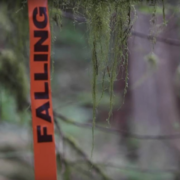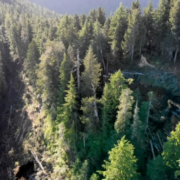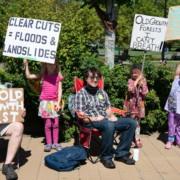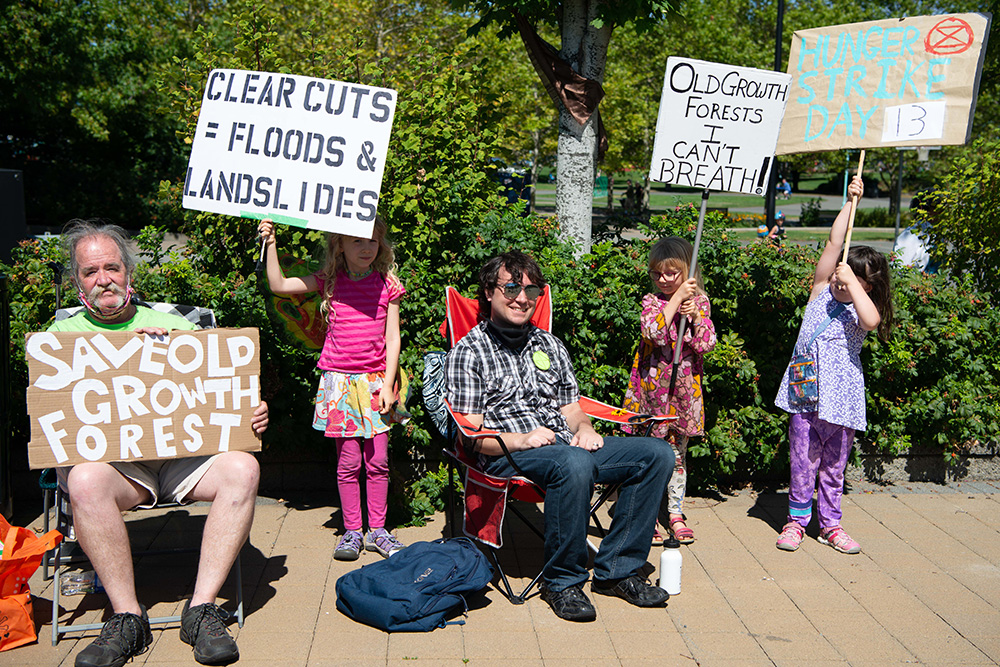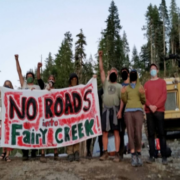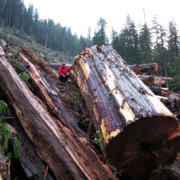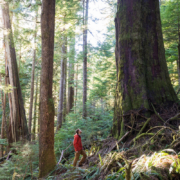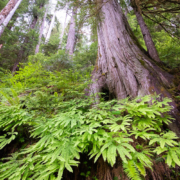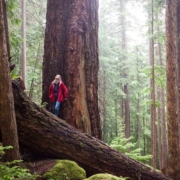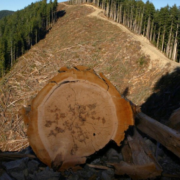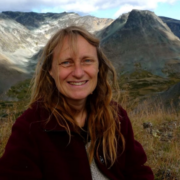Protesters block logging road near Port Renfrew
Times Colonist
August 12, 2020
About 20 protesters have blocked a logging road near Port Renfrew, vowing they will stay until old-growth forests in a critical watershed area of the San Juan River are protected.
The protesters say they want the provincial government to prevent Teal Jones from building a road into the Fairy Creek headwaters. They say the logging company has already cut trees and blasted and bulldozed rock for the road, and are cresting a ridge into an area that contains old-growth yellow cedar, hemlock, Douglas fir and cedar.
The area is part of Tree Farm Licence 46, which is held by Surrey-based Teal Jones.
In a statement, protesters are calling on the province for the “immediate and permanent protection of the entire Fairy Creek Valley, [and to] nullify all cutbocks and road construction approvals in the watershed and contiguous old-growth forests.”
Bobby Arbess, a spokesman for the protesters, said Fairy Creek is the last unlogged tributary in the San Juan watershed and “is far too important to allow the status quo of industrial forestry to happen here.”
He said the “grass-roots” protest sprung up quickly as Teal Jones intensified its road-building operations. The group includes locals from Port Renfrew and Jordan River and others from as far away as Fanny Bay who are concerned about the rapid decline of old-growth forests, said Arbess, who said he’s a landscaper.
“Teal Jones is trying to get a foothold into the watershed, which is a way companies leverage for a cut-block application,” Arbess said. “They say, ‘We’ve already built the road, so let us log.’ ”
Tree Forest Lisences cover vast areas and companies who hold them must apply to log and build roads in areas within the licence area. So far, Teal Jones has not applied for a cutblock in the Fairy Creek watershed, but observers say cresting the ridge on tributary’s valley is too close.
A sub-contractor was taking photos of the protesters over the weekend, and Arbess expects Teal Jones to file a court injunction to have them removed.
A spokesman for Teal Jones said Tuesday the “company has no comment at this time.”
The protesters want Premier John Horgan — whose riding contains the tree-forest licence — to immediately release the recommendations outlined by an independent review on old-growth forests.
The review was completed April 30 and a response was expected by Forestry Minister Doug Donaldson within six months, although the minster has recently said it could be revealed by the end of summer or early fall.
The protesters expect that the report will recommend protecting old-growth forests and the critical habitats around them.
“We’re trying to send a strong message that the loss of critical old-growth affects habitats for so many [species] that it hurts diversity and it degrades salmon habitat,” Arbess said.
Arbess suggested the slow response from government might also have a political point, saying Teal Jones is headquartered in Surrey, which is a “critical swing riding for the NDP.”
Arbess suggested the Fairy Lake watershed would be a good park acquisition for the Capital Regional District, which has land from Salt Spring to Port Renfrew.
Port Renfrew has been reinventing itself after the decline of forestry and commercial fishing and now promotes itself as an outdoor recreation hub with trail heads to the West Coast and Juan de Fuca trails.
The local chamber of commerce uses “Tall Tree Capital of Canada’ to promote the region as tourists have been flocking to old-growth patches called Avatar Grove, Red Creek Fir and Lonely Doug.
dkloster@timescolonist.com

